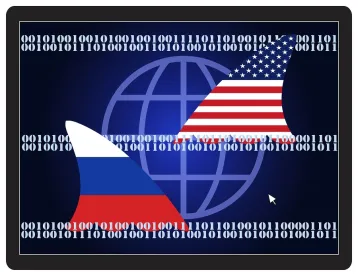Twelve minutes ahead of the deadline set by Congress back in August, the U.S. Treasury Department issued a highly anticipated report listing Russian oligarchs and senior political figures. That sound you heard at 11:48 last night? A host of wealthy Russians heaving sighs of relief.
The “Countering America’s Adversaries Through Sanctions Act,” (CAATSA) which was passed with overwhelming bipartisan support last summer, instituted new sanctions against Russia related to its interference with Ukraine and its alleged tampering with the 2016 presidential election.
But it also required the Treasury Department to issue, no later than yesterday, a report identifying Russian oligarchs with close ties to Vladimir Putin. The report was to identify “the most significant senior political figures and oligarchs in the Russian federation . . . as determined by their closeness to the Russian regime and their net worth.” The report was required to detail the relationship between identified oligarchs and President Vladimir Putin or “other members of the Russian ruling elite,” “any indices of corruption with respect to those individuals, “their net worth and known sources of their (and their families’) income, and the non-Russian business affiliations of those individuals.”
In addition to reporting on individuals, the report was to identify “Russian parastatal entities,” their leadership structures and beneficial ownership, and the scope of their non-Russian business affiliations.
In anticipation of the report, Russians who feared their inclusion on the list fretted and maneuvered; some reportedly liquidated holdings or approached former Treasury and State Department officials for help staying off the list.
But for all their worry, the report included so many individuals, whose net worth and official position were already public record, that it seems unlikely, in itself, to negatively impact those listed. Indeed, the methodology for inclusion set forth in the report does not suggest that ties to Putin’s regime or any suspected wrongdoing were taken into account in creating the list. Instead, the report states that Treasury included on the list of oligarchs “those individuals who, according to reliable public sources, have an estimated net worth of $1 billion or more.” Similarly, the list of senior political figures merely includes “i) senior members of the Russian Presidential Administration; ii) members of the Russian Cabinet, cabinet-rank ministers, and heads of other major executive agencies; iii) other senior political leaders, including the leadership of the state Duma and Federation Council, other members of the Russian Security Council, and senior executives at state-owned companies.”
And, the unclassified report (which, exclusive of the appendix listing oligarchs and political figures, comes in at under two pages) explicitly states that the report “is not a sanctions list, and the inclusion of individuals or entities . . . does not and in no way should be interpreted to impose sanctions on those individuals or entities.” It goes on to stress, “Inclusion in this report also does not constitute the determination by any agency that any of those individuals or entities meet the criteria for designation under any sanctions program.”
Putin made light of the list, joking that it was “offensive” that he was not included, and, though he characterized the list as an “unfriendly act,” called for no retaliation. Echoing the sentiments of many U.S. observers, Putin reportedly remarked, “What is the point of this? I don’t understand.”
The White House also announced last night its determination that no new sanctions are needed on Russia, since those already in place are already “serving as a deterrent.”
But though the Treasury report was somewhat anticlimactic, it is not the end of the story on the ongoing efforts to address the concerns Congress raised in CAATSA. Treasury conducted a classified briefing last night with the Senate on U.S. diplomatic efforts related to the Russia sanctions.
And, a portion of last night’s Treasury report remains classified (as CAATSA allows). Since CAATSA required the report to detail several issues that were not included in the unclassified portion of the report, we can assume that that information is included in the classified report. As mentioned above, those required details include the oligarchs’ relationship to Putin, indices of corruption, the sources of their (and their families’) income, and their non-Russian business affiliations. Furthermore, CAATSA required Treasury to provide a list of Russian parastatal entities and set forth “the exposure of key economic sectors” to named oligarchs and entities, “the likely effects of imposing debt and equity restrictions on Russian parastatal entities,” and of adding them to OFAC’s list of blocked persons, and “the potential impacts of imposing secondary sanctions with respect to Russian oligarchs, Russian state-owned enterprises, and Russian parastatal entities.”
Furthermore, OFAC announced on Friday new individuals and entities subject to sanctions related to Russia’s conflict with Ukraine. That announcement came not long after several other sanctions designations about which we have previously blogged. Thus, whether yesterday’s report will result in additional people or entities being subject to sanctions remains an open question.



 />i
/>i
